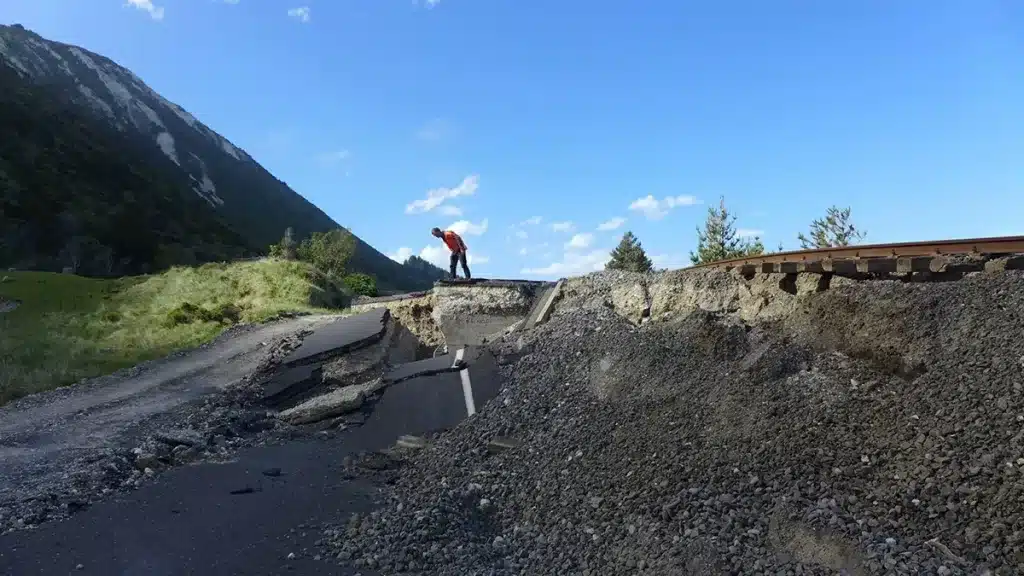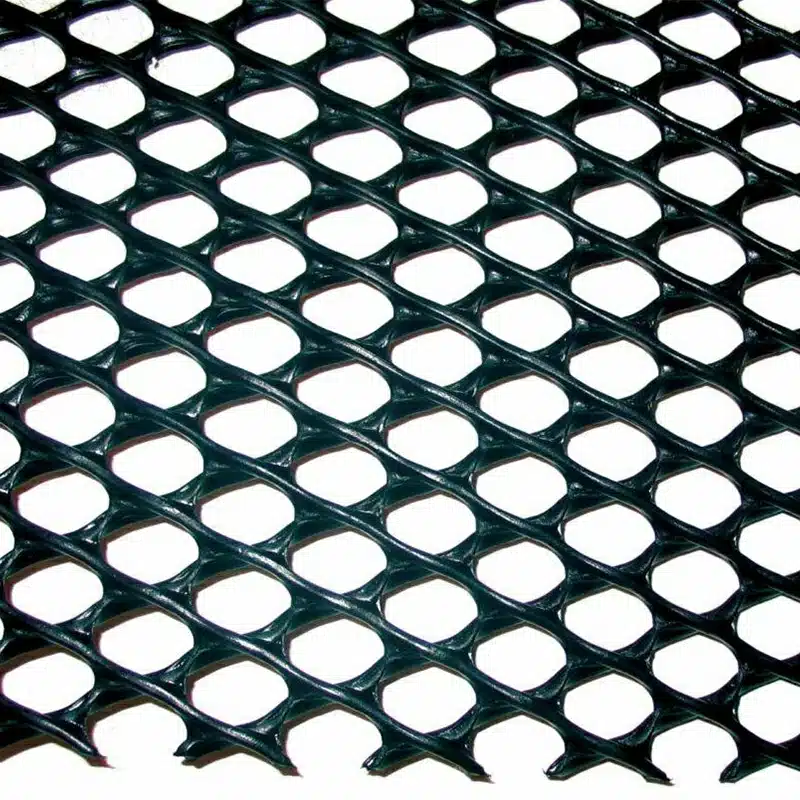+86-159 9860 6917
info@geofantex.com
geofantex@gmail.com
+86-400-8266163-44899
In the realm of modern construction and infrastructure development, efficient drainage systems play a pivotal role in maintaining the integrity and longevity of various structures. One innovative solution that has gained significant attention is the Geonet drainage mat.

What is a Geonet Drainage Mat?
A Geonet Drainage Mat is a geosynthetic material designed to manage water drainage in civil engineering and construction projects. It’s primarily composed of a geonet layer, usually made of high-density polyethylene (HDPE), sandwiched between two layers of geotextile. The geonet’s crisscross structure facilitates efficient water flow, while the geotextile layers filter soil and sediment.
Key Features:
- Purpose: It provides a drainage layer to redirect water, preventing water accumulation and structural damage.
- Composition: Made with high-density polyethylene for the net and geotextiles for filtration, ensuring durability, chemical resistance, and flexibility.
- Applications:
- Retaining walls to relieve hydrostatic pressure.
- Green roofing systems for water management.
- Roadway and railway embankments to reduce soil erosion.
- Landfills as a protective drainage layer.
What are the Benefits of Geonet Drainage Mats?
GeoNet drainage mats offer several benefits in construction and environmental management projects. Here’s a breakdown of their primary advantages:
- Enhanced Drainage: GeoNet drainage mats facilitate rapid removal of water from the soil, which is crucial in preventing waterlogging and associated issues like structural instability in buildings and infrastructure.
- Erosion Control: These mats help reduce erosion by protecting soil from the direct impact of rainfall and surface runoff. This is particularly important in sloped areas where erosion can lead to significant land degradation.
- Load Distribution: When used in construction, these mats distribute loads more evenly, reducing stress on underlying materials. This can extend the lifespan of paved and unpaved surfaces.
- Protection for Waterproofing Membranes: GeoNet mats protect waterproofing membranes in roofing and foundation applications. They prevent direct contact with other materials that could cause punctures or tears.
- Root Protection: In landscaping and green roofing, the mats can protect against root penetration, which might otherwise harm waterproof membranes or structural elements.
- Cost-Effectiveness: These mats are often more cost-effective compared to traditional drainage systems like extensive piping or gravel layers, especially over large areas.
- Environmental Benefits: GeoNet drainage mats are often made from recycled materials and are themselves recyclable, contributing to sustainability in construction practices.
- Easy Installation: They are typically lightweight and easy to roll out, which simplifies installation compared to more labor-intensive traditional drainage systems.
These features make GeoNet drainage mats a versatile and effective choice for managing water and protecting structures in a variety of settings.
How Does a Geonet Drainage Mat Work?
A geonet drainage mat is an engineered structure used to facilitate water drainage in construction projects, particularly for waterproofing and managing groundwater. It consists of a three-dimensional polymeric core (usually HDPE or PP) with a mesh-like structure. Here’s a basic outline of how it works:
- Water Collection: The mat is placed between layers of construction materials (such as foundation walls or under soil), and its unique core collects and directs water.
- Water Flow: Due to the mesh-like structure, the mat creates channels for water to flow horizontally or vertically, reducing the buildup of hydrostatic pressure.
- Drainage Efficiency: The core is often covered with a geotextile filter fabric to prevent soil or debris from clogging the drainage channels.
- Application: It can be applied in various construction environments like retaining walls, tunnels, basements, and roofs to keep areas dry and protected from water infiltration.
Are Geonet Drainage Mats Easy to Install?
Installation Process for Geonet Drainage Mats
Preparation:
- Site Assessment: Evaluate the site to determine drainage needs and identify any potential obstacles.
- Surface Preparation: Ensure the surface is clean, smooth, and free from sharp objects that could damage the mats.
Material Handling:
- Unrolling the Mats: Carefully unroll the Geonet Drainage Mats to prevent any creases or damage.
- Cutting to Size: Use appropriate tools to cut the mats to the required dimensions.
Installation:
- Positioning: Place the mats in the desired location, ensuring they lay flat against the surface.
- Overlap and Sealing: Overlap the edges of the mats by a few inches to ensure continuous coverage and secure them with adhesive or other fastening methods as needed.
Securing the Mats:
- Anchoring: Use anchors or other fastening devices to secure the mats, especially in areas with potential movement or high water flow.
- Edge Treatment: Ensure the edges are properly secured to prevent water from bypassing the drainage system.
Quality Check:
- Inspection: Conduct a thorough inspection to ensure there are no gaps, wrinkles, or unsecured sections.
- Testing: Test the drainage system to verify proper water flow and drainage efficiency.
Potential Challenges:
- Uneven Surfaces: Installation on uneven surfaces may require additional preparation or adjustments.
- Weather Conditions: Extreme weather conditions can affect the installation process and the performance of the mats.
- Material Handling: Improper handling of the mats can lead to damage or reduced effectiveness.
Tips for Successful Installation:
- Follow Manufacturer Guidelines: Adhere to the specific installation instructions provided by the manufacturer.
- Use Appropriate Tools: Ensure you have the right tools for cutting, securing, and handling the mats.
- Work with a Team: Having an extra pair of hands can make the installation process smoother and more efficient.
In conclusion, Geonet drainage mats offer an innovative solution to drainage challenges in various construction and engineering projects. Their unique three-dimensional structure, efficient water flow capabilities, and versatility make them a valuable asset in maintaining the integrity and longevity of diverse structures. Whether in road construction, athletic fields, or landscaping, Geonet drainage mats prove their worth by optimizing drainage systems and preventing potential issues associated with water accumulation.



Get Free Sample
We’ll respond as soon as possible(within 12 hours)






















